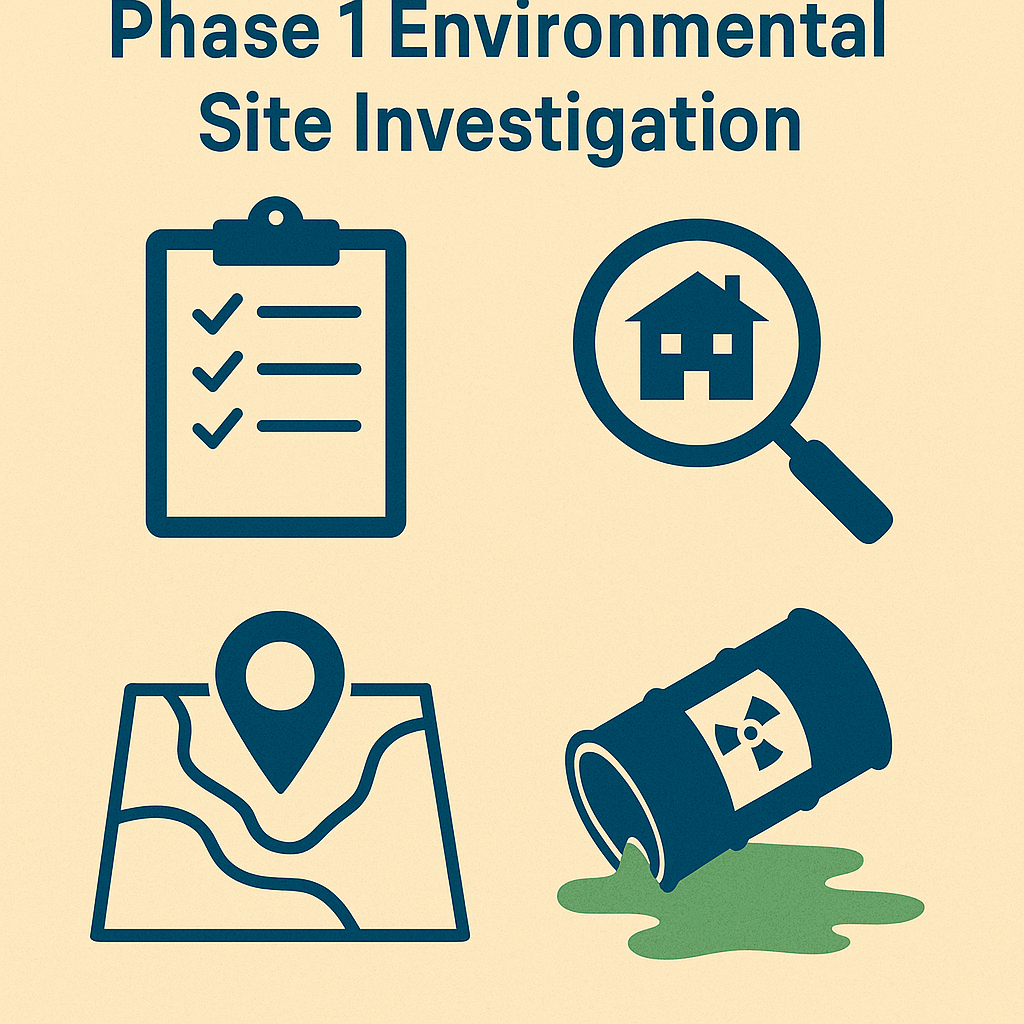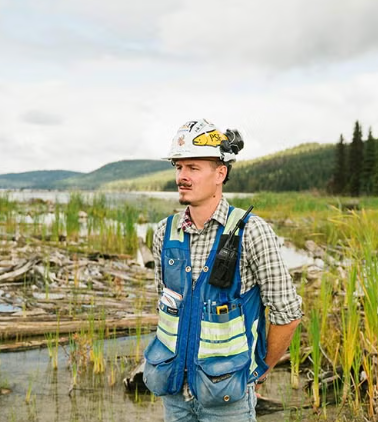The Truth About Phase 1 Environmental Investigations

What are Phase 1 Environmental Investigations?
Phase 1 Environmental Investigations is a critical process designed to assess the potential environmental liabilities associated with a specific property. This investigation serves as a preliminary assessment, primarily aimed at identifying any existing or potential contamination that could pose risks to human health or the environment. The process typically involves a comprehensive review of historical and current land use, as well as an evaluation of the physical characteristics of the site and its surroundings.
To begin with, the investigation usually starts with a thorough document review, which includes examining historical records, land use maps, and previous environmental assessments. This phase is essential because it helps to establish a timeline of the property’s use, identifying any activities that may have led to contamination, such as industrial operations, waste disposal practices, or agricultural activities. By understanding the historical context, investigators can pinpoint areas of concern that warrant further examination.
In addition to document review, the investigation includes a site visit, where trained professionals conduct a visual inspection of the property. During this visit, they look for signs of contamination, such as stained soil, distressed vegetation, or the presence of hazardous materials. This physical assessment is crucial, as it provides tangible evidence that can corroborate findings from the document review. Furthermore, the site visit allows investigators to assess the current condition of the property and its potential impact on surrounding areas.
Another key component of a Phase 1 Environmental Investigations is stakeholder interviews. Engaging with current and former property owners, tenants, and local residents can yield valuable insights into the site’s history and any known environmental issues. These conversations can reveal anecdotal evidence of past activities that may not be documented in official records, thereby enriching the overall understanding of the site’s environmental context.
Once the data collection phase is complete, the information is analyzed to determine if there are any recognized environmental conditions (RECs) present. RECs are defined as the presence or likely presence of hazardous substances or petroleum products in, on, or at a property. If RECs are identified, the investigation may recommend further action, such as a Phase 2 Site Investigation, which involves more detailed sampling and analysis to quantify the extent of contamination.
It is important to note that a Phase 1 Site Investigation is not intended to provide a definitive conclusion about the presence of contamination; rather, it serves as a tool for risk assessment and decision-making. By identifying potential environmental concerns early in the process, stakeholders can make informed choices regarding property transactions, development plans, or remediation efforts. This proactive approach not only helps to mitigate financial risks but also ensures compliance with environmental regulations.
In conclusion, an Environmental Phase 1 Site Investigation is an essential step in understanding the environmental history and potential liabilities of a property. Through a combination of document review, site inspection, and stakeholder engagement, this investigation provides a foundational understanding of any environmental risks that may exist. By identifying these risks early, property owners and developers can take appropriate measures to address them, ultimately promoting responsible land use and environmental stewardship.
Key Components of Phase 1 Environmental Investigations

An environmental Phase 1 site investigation is a critical process in assessing potential environmental liabilities associated with a property. This investigation serves as a preliminary assessment to identify any existing or potential contamination that may affect the site’s usability and value. The key components of an environmental site investigation are designed to provide a comprehensive understanding of the site’s historical and current conditions, thereby enabling informed decision-making for stakeholders.
To begin with, the investigation typically starts with a thorough review of historical records. This includes examining past land use, ownership, and any previous environmental assessments. By analyzing documents such as property deeds, aerial photographs, and historical maps, investigators can identify potential sources of contamination, such as former industrial operations or waste disposal practices. This historical context is essential, as it lays the groundwork for understanding the site’s environmental legacy.
In addition to historical research, a crucial component of the Phase 1 Environmental Investigations is the site reconnaissance. During this phase, trained professionals conduct a physical inspection of the property to observe current conditions and identify any visible signs of contamination. This may include looking for stained soil, distressed vegetation, or the presence of hazardous materials. The site visit also allows investigators to assess surrounding properties, as contamination can migrate from adjacent sites. By combining visual observations with historical data, investigators can form a more complete picture of the site’s environmental status.
Moreover, interviews with current and past property owners, occupants, and local government officials can provide valuable insights into the site’s history and any known environmental issues. These conversations can reveal anecdotal evidence of past activities that may not be documented in public records. Engaging with stakeholders helps to fill in gaps and provides a more nuanced understanding of the site’s potential risks.
Another integral aspect of the Phase 1 Environmental Investigations is the evaluation of regulatory databases. Investigators access various databases to identify any reported incidents of contamination, such as spills or violations of environmental regulations. This information is crucial for determining whether the site has been subject to any environmental enforcement actions or if it has been listed as a contaminated site by regulatory agencies. By cross-referencing this data with the findings from historical research and site reconnaissance, investigators can assess the likelihood of contamination more accurately.
Furthermore, the Phase 1 Environmental Investigations culminates in the preparation of a comprehensive report that synthesizes all findings. This report typically includes an executive summary, a description of the site, the methodologies used during the investigation, and a detailed analysis of potential environmental concerns. Importantly, the report also outlines recommendations for further action, which may include conducting a Phase 2 site investigation if significant concerns are identified. This subsequent phase involves more invasive testing, such as soil and groundwater sampling, to confirm the presence and extent of contamination.
In conclusion, Phase 1 Environmental Investigations is a multifaceted process that combines historical research, site reconnaissance, stakeholder interviews, and regulatory database evaluations. Each component plays a vital role in identifying potential environmental liabilities and informing stakeholders about the risks associated with a property. By providing a thorough understanding of the site’s environmental conditions, the Phase 1 Environmental Investigations serves as a foundational step in responsible property management and development, ultimately contributing to the protection of public health and the environment.
The Role of Environmental Engineering in Phase 1 Environmental Investigations
environmental engineering plays a crucial role in the execution and interpretation of Phase 1 Environmental site investigations (ESIs), which are essential for assessing potential environmental liabilities associated with a property. These investigations are typically the first step in the due diligence process, particularly in real estate transactions, and they aim to identify any existing or potential contamination that could affect the value or usability of a site. By employing a systematic approach, environmental engineers contribute their expertise to ensure that these investigations are thorough, accurate, and compliant with regulatory standards.
To begin with, environmental engineers utilize their knowledge of environmental science and engineering principles to design the Phase 1 investigation process. This involves a comprehensive review of historical and current land use, which is critical in identifying potential sources of contamination. Engineers analyze historical records, aerial photographs, and topographic maps to trace the property’s past activities. For instance, if a site was previously used for industrial purposes, it may have a higher likelihood of soil or groundwater contamination due to the presence of hazardous materials. By understanding the historical context, environmental engineers can better assess the potential risks associated with the site.
Moreover, the role of environmental engineers extends to conducting interviews with current and past property owners, occupants, and local government officials. These discussions can provide valuable insights into the site’s operational history and any known environmental issues. By synthesizing this qualitative data with quantitative assessments, engineers can develop a more comprehensive understanding of the site’s environmental conditions. This holistic approach is essential, as it allows for the identification of potential contaminants that may not be immediately apparent through physical inspections alone.
In addition to historical research and interviews, environmental engineers are responsible for conducting site reconnaissance. This involves a physical inspection of the property to identify any visible signs of contamination, such as stained soil, distressed vegetation, or improperly stored hazardous materials. During this phase, engineers also assess the surrounding environment, including nearby water bodies and sensitive ecosystems, to evaluate potential pathways for contamination migration. This fieldwork is critical, as it provides empirical evidence that can corroborate findings from document reviews and interviews.
Furthermore, environmental engineers must also consider regulatory frameworks and guidelines that govern environmental assessments. They ensure that the Phase 1 investigation adheres to standards set forth by agencies such as the Environmental Protection Agency (EPA) and state regulatory bodies. This compliance is vital not only for the integrity of the investigation but also for protecting the interests of stakeholders involved in the property transaction. By staying informed about evolving regulations and best practices, environmental engineers can provide clients with reliable and actionable insights.
Once the investigation is complete, environmental engineers compile their findings into a comprehensive report that outlines potential environmental concerns and recommendations for further action, if necessary. This report serves as a critical document for stakeholders, including property buyers, lenders, and regulatory agencies, as it informs decision-making processes regarding property acquisition and development. In conclusion, the role of environmental engineering in Phase 1 Environmental site investigations is multifaceted and integral to ensuring that potential environmental liabilities are identified and addressed. Through a combination of historical research, site reconnaissance, regulatory compliance, and thorough reporting, environmental engineers provide essential support in navigating the complexities of environmental assessments, ultimately contributing to more sustainable land use practices.
Contact us today to build your next project.
Send an Email
Office
CMT
10665 Richmond Ave, Ste 190
Houston, Texas 77042
Hours
Mon-Fri: 7am – 6pm
Sat: 8am – 5pm
Sun: Closed
Communicate
Email: [email protected]
Phone: (832) 464-8334

